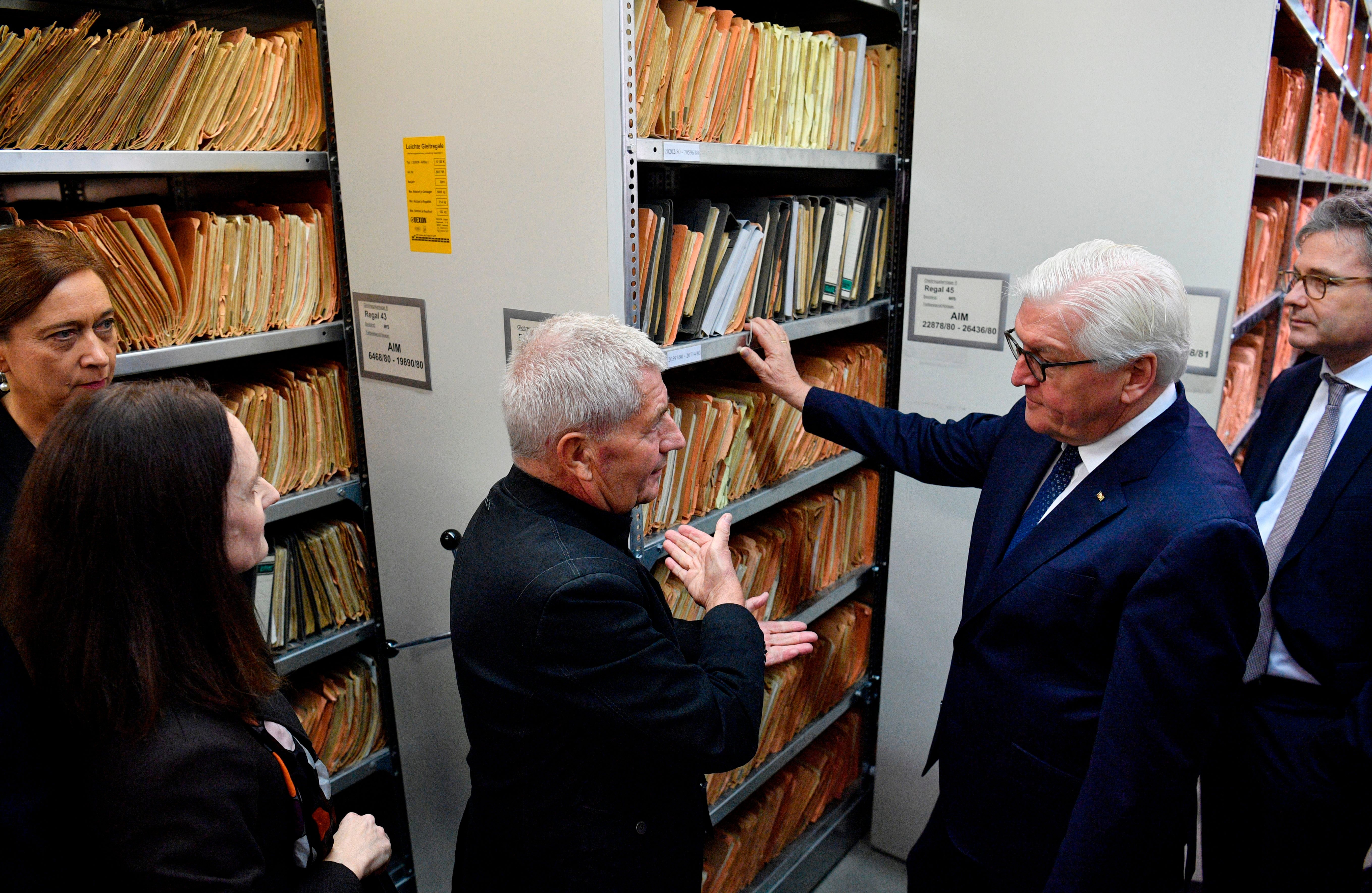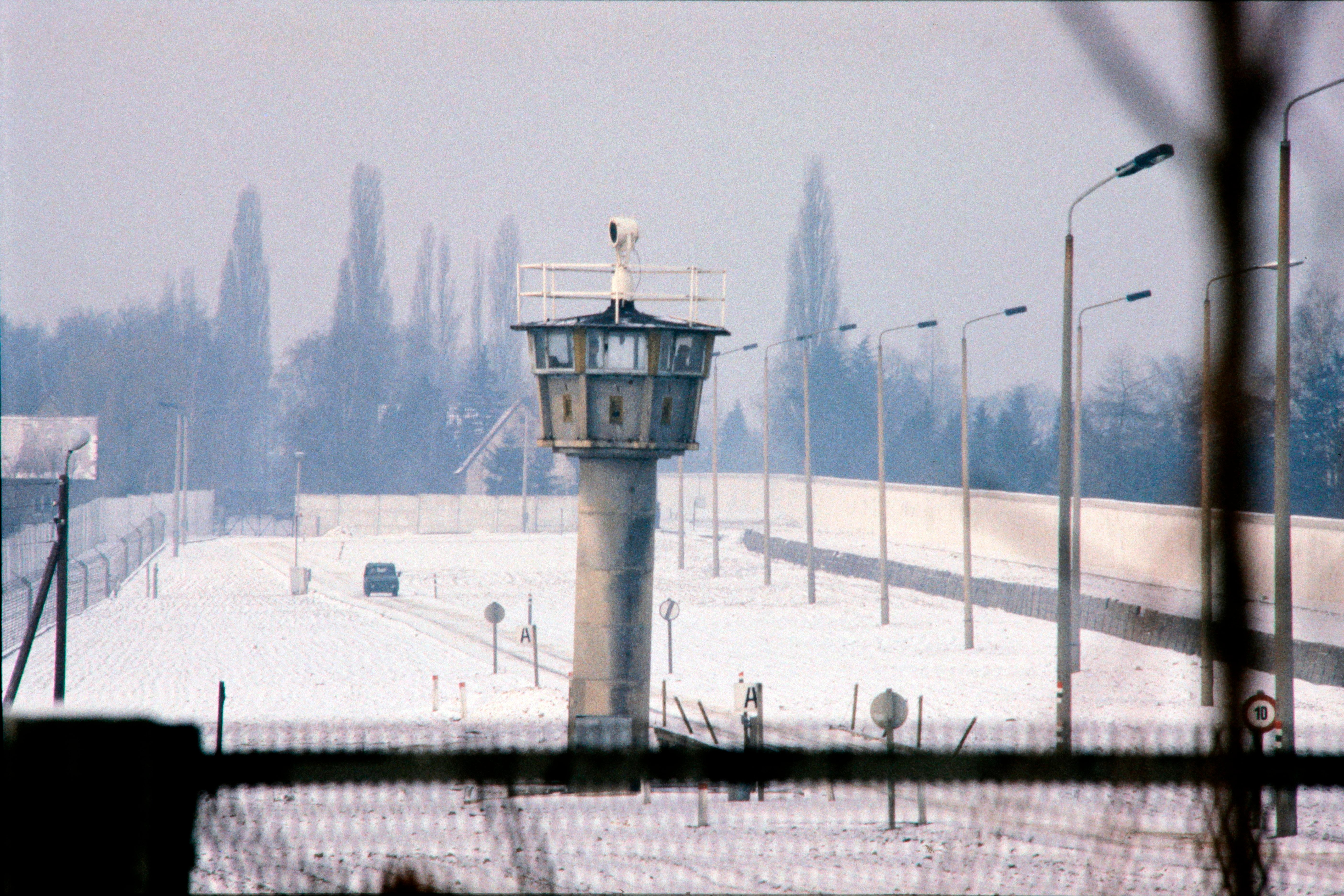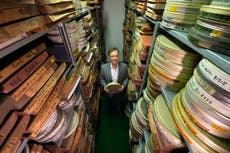The Independent's journalism is supported by our readers. When you purchase through links on our site, we may earn commission.
The quest to piece together the secret history of Stasi spying
When protesters stormed Stasi headquarters in 1989, they found its officers busy shredding, pulping and tearing its vast trove of incriminating documents. Today, researchers are putting them back together, writes Annalisa Quinn

First the researchers cut the sacks lengthwise, careful not to disturb the jumble of torn paper inside. Then they go through the bags, pulling out food scraps, trash or anything else mixed in during the chaotic rush to destroy evidence.
They are working to reassemble, scrap by scrap, somewhere between 40 million to 55 million pieces of paper that were torn up and stuffed into sacks by the East German secret police, known as the Stasi, in the final days of the German Democratic Republic.
When pro-democracy protesters stormed Stasi headquarters in 1989 and 1990, they found officers at work inside, shredding, pulping and tearing documents by hand. The Ministry for State Security was trying desperately to destroy the surveillance records it had collected over four decades of spying on its own citizens.
Much of the material was unsalvageable, burned or shredded into tiny pieces. But some sacks contained records that had been clumsily torn, and were intended to be destroyed later. Activists in East Germany managed to halt their destruction.
In the 30 years since, so-called “puzzlers” have been working to reconstruct these torn documents by hand, laboriously sorting and matching fragments of paper by colour and handwriting, before taping them back together and submitting them to the archives. These were employees of a dedicated Stasi Records Agency, formed in 1991, though the files have recently come under the authority of the German Federal Archives.
Historian Timothy Garton Ash describes the process as an exercise in “extraordinary, but some would say a bit crazy, perfectionism”. Some 500 sacks have already been reconstructed, with 15,500 left to go.
The central principle of the archive is to “help people understand how the Stasi interfered in their lives,” says Dagmar Hovestädt, head of communication and research for the Stasi Records Archive. Since 1992, the researchers have been offering former citizens of East Germany the opportunity to view their personal Stasi file, a complicated rite of passage that often reveals that family members, friends or neighbours had reported their activities to the secret police. Now that many of the victims of Stasi surveillance are nearing the ends of their lives, the puzzlers are racing to give them the option to see any reconstructed documents before they die.
Information on Stasi informants and officers is another story: It is not considered private, so journalists and researchers can request access
Siad Akkam, a student who sometimes mans the desk where people request a file, said their ambivalence is often clear. “You see that they’re kind of not sure and insecure. Should I do it? Should I know?” Many of the people who pick up a request form are the children or grandchildren of victims, hoping to convince their relatives to find out the truth.
A rotating team of around eight people works in the building that once housed the Stasi headquarters and the office of the notorious leader of the secret police, Erich Mielke. Others work at the Stasi’s former regional hubs. There’s a special justice, Hovestädt says, in undoing the work of the Stasi in “a historic site where, for 40 years, repression was organised. This was the brains of the operation.” In the distinctly East German building, full of greys and browns, she says: “You are reminded of whose footsteps you are in.”
A bag might hold not just paper, but perhaps collectible stamps, a telephone directory for a GDR party conference, or Stasi training materials, whether that’s Marxist-Leninist literature to instructions on how to tap a phone or clean a gun.
Before beginning work on any given bag, workers determine the rough subject matter. They look for names preceded by the letters “IM”, which stand for inoffizieller Mitarbeiter, or “unofficial collaborator” – these were the Stasi’s informers. Anything to do with Stasi surveillance of their own citizens is prioritised. A bag containing mostly training materials, or bureaucratic documents, would be considered less urgent and returned to storage.
The bags have their own layers, like geological strata, which researchers do their best to preserve. When the contents are determined to be important, either for historians or for victims personally, researchers remove the scraps in stages, looking for matching edges, handwriting or paper.

If the scraps are too shredded, researchers sometimes virtually reconstruct them with a machine called the ePuzzler. But the volume of torn files is so vast that the ePuzzler is unable to speed up the project significantly.
The teams lay the scraps that can be reconstructed by hand together on a table and use archival tape to piece together each document. From there, the completed documents go into the Stasi files. There is no publicity associated with them, and no one mentioned in the files is notified – the group’s philosophy is that the choice should be the victim’s, to inquire after their file or not.
Information on Stasi informants and officers is another story: It is not considered private, so journalists and researchers can request access. In the 1990s, revealing someone had been an informant ruined so many careers and marriages that the German news magazine Der Spiegel, which regularly outed prominent people thanks to the archives, nicknamed them the “horror files”.
In recent years, the gush of revelations has slowed, but their consequences can still be life-altering. “You have to rewrite your own life, in some cases,” says Hovestädt.

Petra Riemann first heard about her father’s double life through a newspaper report. Lutz Riemann was an East German actor known for playing a TV policeman. But, according to files seen by the Welt am Sonntag newspaper in 2013, he had also been an informant, keeping tabs on family and friends. His daughter had known he sometimes worked with the foreign intelligence arm of the Stasi, but imagined him as a kind of James Bond figure, she said – not someone using intimate dinners and birthday parties to gather intelligence on close ones.
“He used our family to obtain the trust of his victims,” she says.
Still, questions remain unanswered. When she found out later he had a secret second family, she didn’t know if they were the result of a simple affair, or if, as he claimed, they were a part of his Stasi work. She says that she and her parents no longer speak.
Riemann, who wrote a book about the experience with her husband, journalist Torsten Sasse, believes the knowledge gained from the files was worth the pain. “You could read something in these files that will disturb you forever,” she says, “but the question, of course, is: Could you live with a lie?”
Lutz Riemann could not be reached for comment. But in 2013, he acknowledged to the Welt am Sonntag that he had worked as an informant and said that, as a committed communist, he had done so out of ideological conviction.

Thus far, the reconstructed documents have included information on dissidents such as the late writer and politician Jürgen Fuchs, whom the Stasi imprisoned before his deportation to the West. Other reconstructed documents shed light on East German athletic doping practices and the activities of the Red Army Faction, the West German far-left terrorist group.
Ruth Zimmermann, an archivist working on the reconstruction, says that the project is an exercise in the German concept of Aufarbeitung, a word that means working through the injustices of the past.
There is, however, a major gap in the Stasi archive: It records domestic, rather than foreign, surveillance. The files of the foreign-intelligence arm of the Stasi were mostly destroyed, which means informants working in West Germany have not been subject to the same kind of exposure. This asymmetry can lead to a feeling, according to Garton Ash, that this project represents a kind of “victor’s justice”, of West over East.
“This adds to the sense of East German victimhood,” he says, “because the people being exposed as officers and informers are East Germans, and of course there were quite a few agents in West Germany, who are probably still enjoying a much respected retirement.”
As a British journalist working in East Germany in the 1980s, Garton Ash was suspected by the Stasi of being a foreign-intelligence operative. They gathered intelligence on him from a range of people, as he described in his book The File.
At the current rate of about 20 sacks per year, the project would not be finished for centuries. And many of the documents may never be seen
One informer was an elderly East German woman he had befriended after meeting by chance at an exhibition. She spied on him in exchange for being allowed to visit her son who had fled to the West. “She was much more a victim than I was,” he says.
“We who grew up in Washington, DC, or London should all at least ask ourselves, how would I have behaved if I lived in a dictatorship?” says Garton Ash. “I’d like to think I would have been an heroic dissident, but maybe I wouldn’t have been. So that’s a question we should really all have in our minds before sitting in easy judgment on people who, like this wonderful, lovely old lady, informed for the most compelling human reason – she wanted to see her son again.”
At the current rate of about 20 sacks per year, the project will not be finished for centuries. And many of the documents may never be seen. The researchers say that even some of the people who fill out request forms never return to view their files.
But that is in keeping with the guidelines of the project: Yes, you have the right to identify and confront those who betrayed you, Hovestädt says. But, she adds, “you must also have the right not to know.”
This article originally appeared in The New York Times
Join our commenting forum
Join thought-provoking conversations, follow other Independent readers and see their replies
Comments


Bookmark popover
Removed from bookmarks